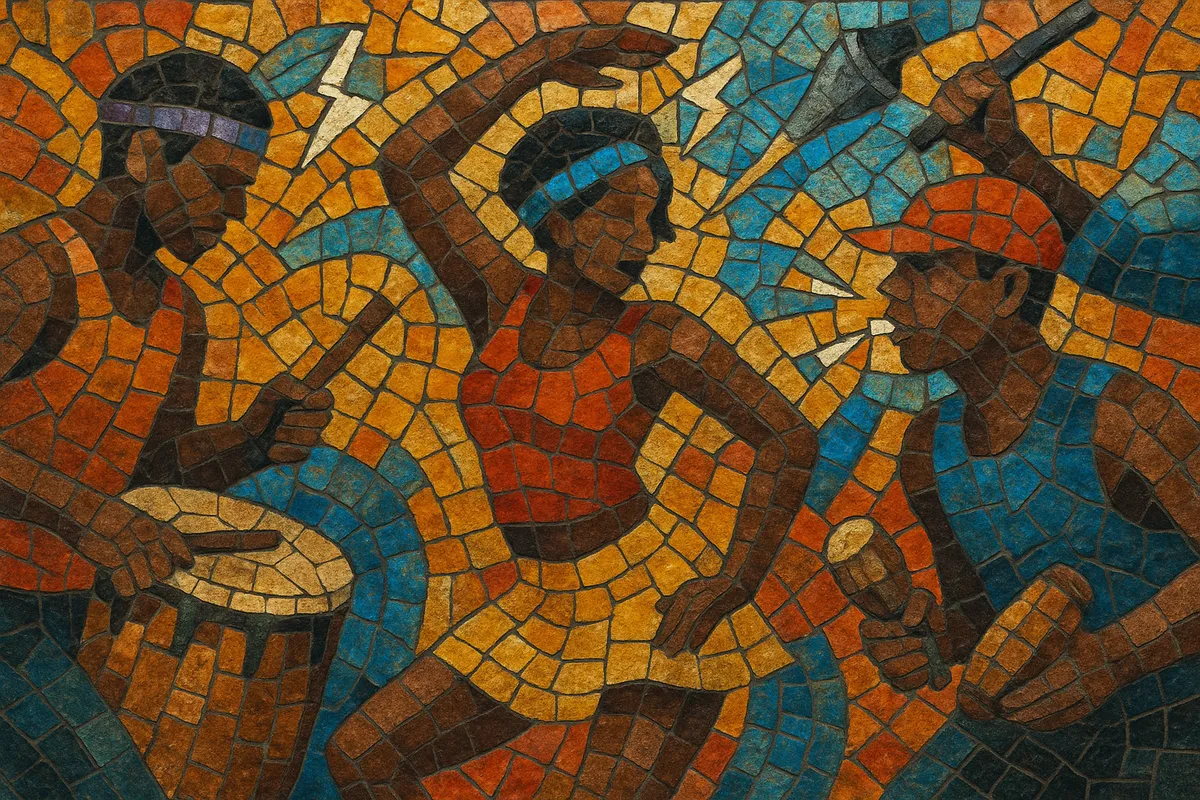
Dennery segment is a drum-forward, chant-driven offshoot of soca that originated in the district of Dennery in Saint Lucia. Often nicknamed "Lucian Kuduro," it fuses the stripped, polyrhythmic punch of African club styles with the road‑march energy of Caribbean carnival.
The style is characterized by minimal melodic content, heavy hand‑percussion grooves (congas, cowbells/iron, shakers), whistle and siren riffs, and short call‑and‑response hooks delivered in Saint Lucian Kwéyòl and English. Tempos typically sit in the groovy soca range (roughly 115–130 BPM), emphasizing a hypnotic, repeating riddim that invites specific dance instructions and crowd participation.
Production tends to be lean and percussive with tight kick–sub alignment, clipped vocal chops, and rhythmic breakdowns rather than harmonic builds—designed as much for street parades as for club play.
Dennery segment emerged in Saint Lucia in the early 2010s, taking its name from the fishing town and district of Dennery. Young producers and DJs began crafting lean, percussion‑led riddims in home studios, drawing on local carnival engine‑room traditions, the groove of groovy soca, the hard, syncopated drive of Angolan kuduro, and the neighboring Dominica bouyon sound. The format favored simple hooks and chants over dense harmony, locking dancers into cyclical, body‑led patterns.
By the mid‑2010s the sound crystallized and spread across the Eastern Caribbean. The nickname “Lucian Kuduro” reflected its African club-music feel, while “Dennery segment” highlighted its local scene and riddim‑based production approach. Tracks such as Freezy’s viral “Split in de Middle” (2017) and Motto’s party‑starter riddims helped push the style from local fêtes and road events to diaspora dance floors in New York, Toronto, and London.
As the sound grew, more Saint Lucian artists and producers adopted the drum‑first blueprint, and mainstream soca acts began cutting features on Dennery segment riddims. The style’s sparse synths, whistles, and chant‑driven hooks translated well to club systems and festival stages, leading to collaborations with regional soca, dancehall, and Afro‑diasporic scenes. While retaining its identity as a St. Lucian form, it influenced percussion choices and groove programming across wider soca releases.
Dennery segment functions as both a club idiom and a carnival engine: it prioritizes collective motion, dance instructions, and Kwéyòl expressions of place and revelry. Its minimal harmonic content and cyclical percussion mirror the social role of road music—keeping crowds moving for long stretches—while spotlighting Saint Lucia’s Creole culture.

